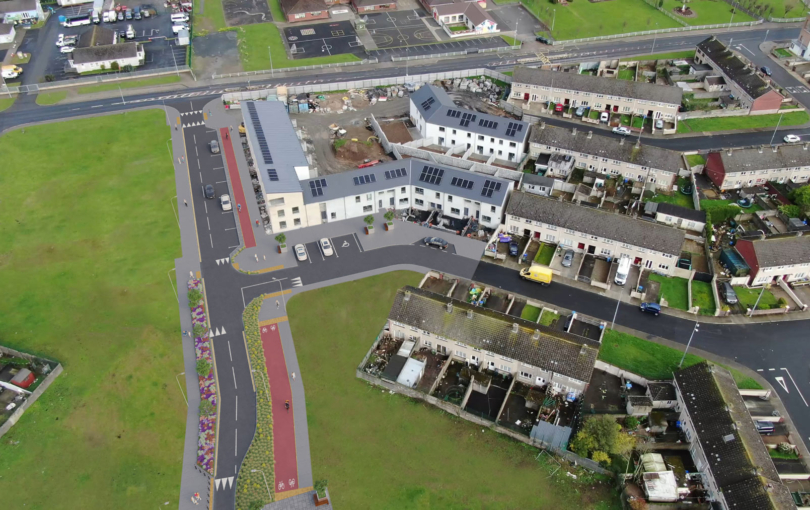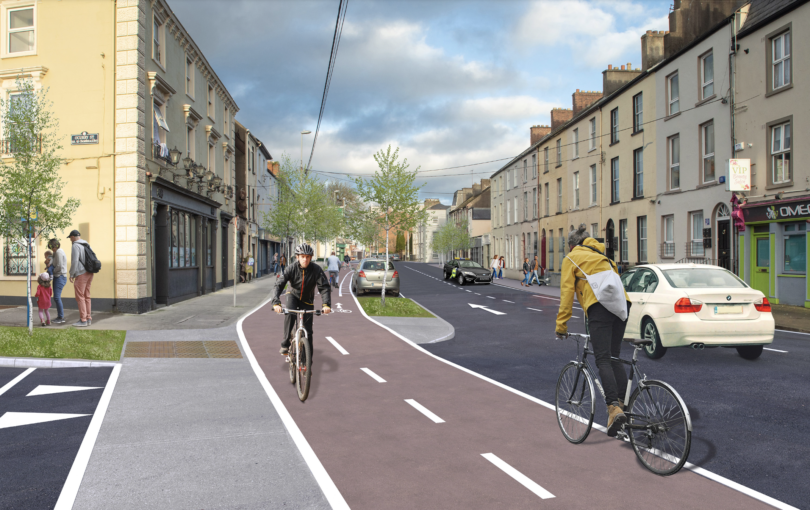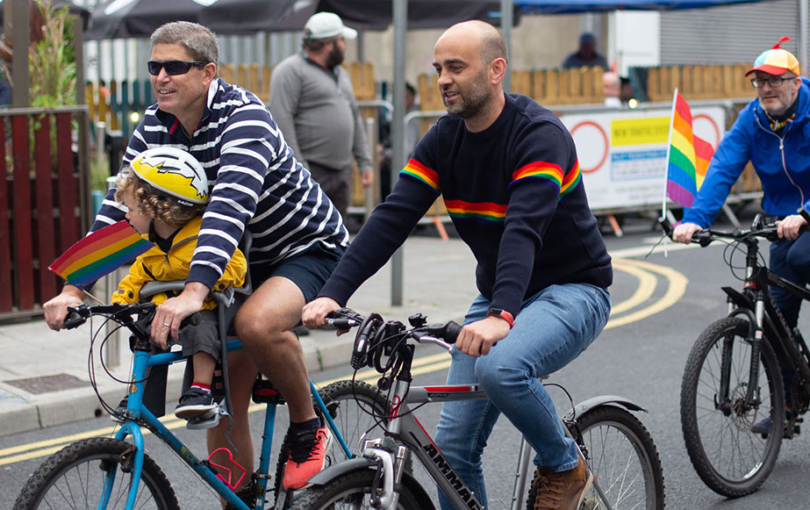I have cycled in Paris in the past, so when I was lucky enough to visit again recently for a rugby match (Allez les Verts!) I was very keen to see some of the changes made since the city made its very public shift toward encouraging cycling en masse.
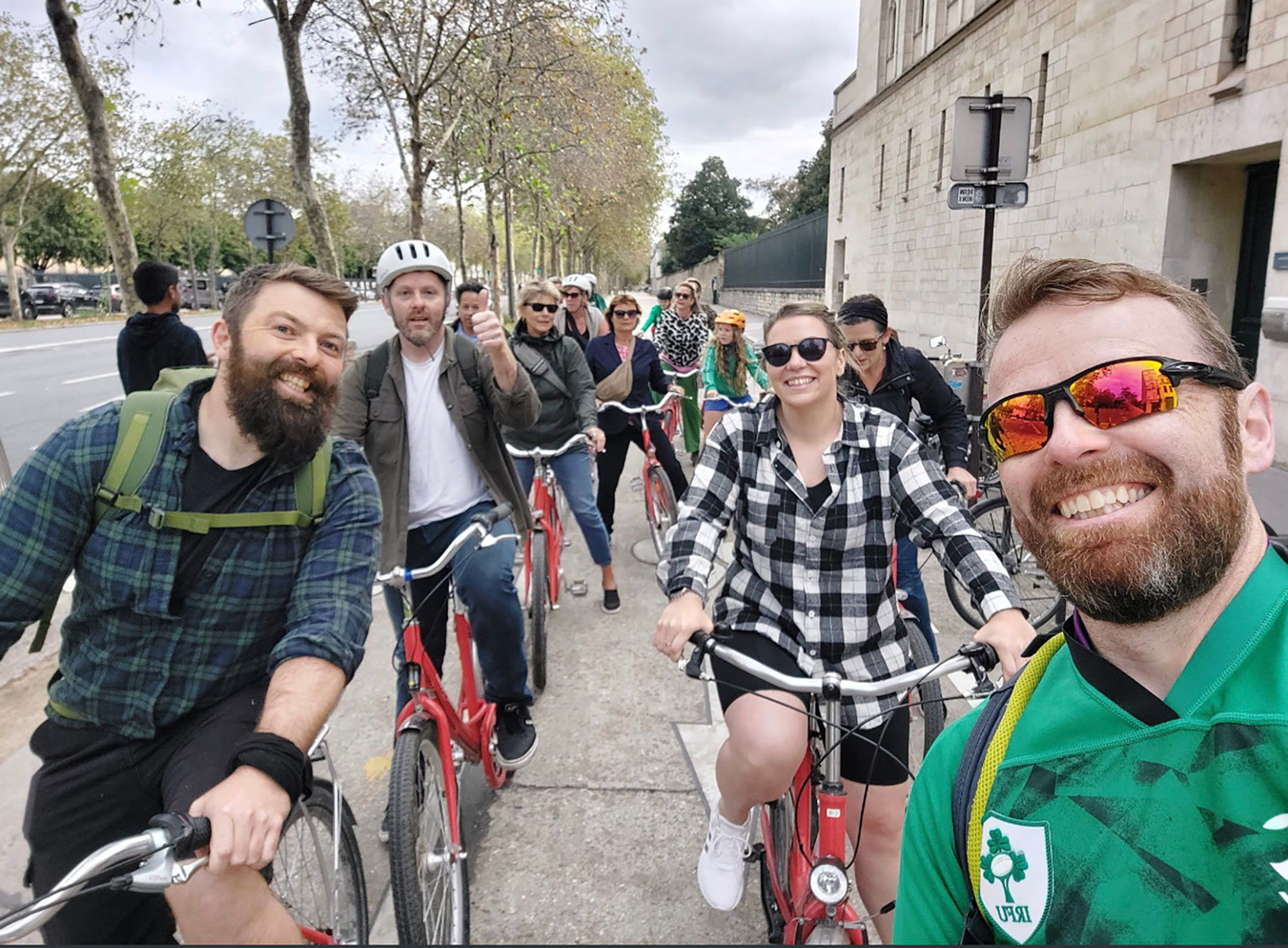
Cycle Stories A Limerick man in Paris
The potted version of this transformation story is that the Mayor of Paris spent €150m on green travel during her first term, which was so well received she pledged to spend a further €250m over 4 years if re-elected. She won a landslide in 2020, and after some delays due to COVID-19, converted the many temporary “Coronapistes” into permanent cycle lanes, and embarked on a grand plan to make it possible to cycle safely from one side of Paris to the other, aiming to become a “cycling city” by 2026.
While I’m a daily bike user in Limerick (both my own pedal bike and an e-cargo bike that has replaced a family car), my three siblings who joined me for this trip are not and were a little apprehensive about cycling in the city. I had cycled in Paris on a few occasions before, but all prior to its recent improvements. So we decided to take a cycle tour first, with the option to rent bikes later. We chose a company I had had my first Parisian cycling experience with some 10+ years ago, for a 3.5-hour tour covering much of central Paris, on a mix of roads, paths and parks.
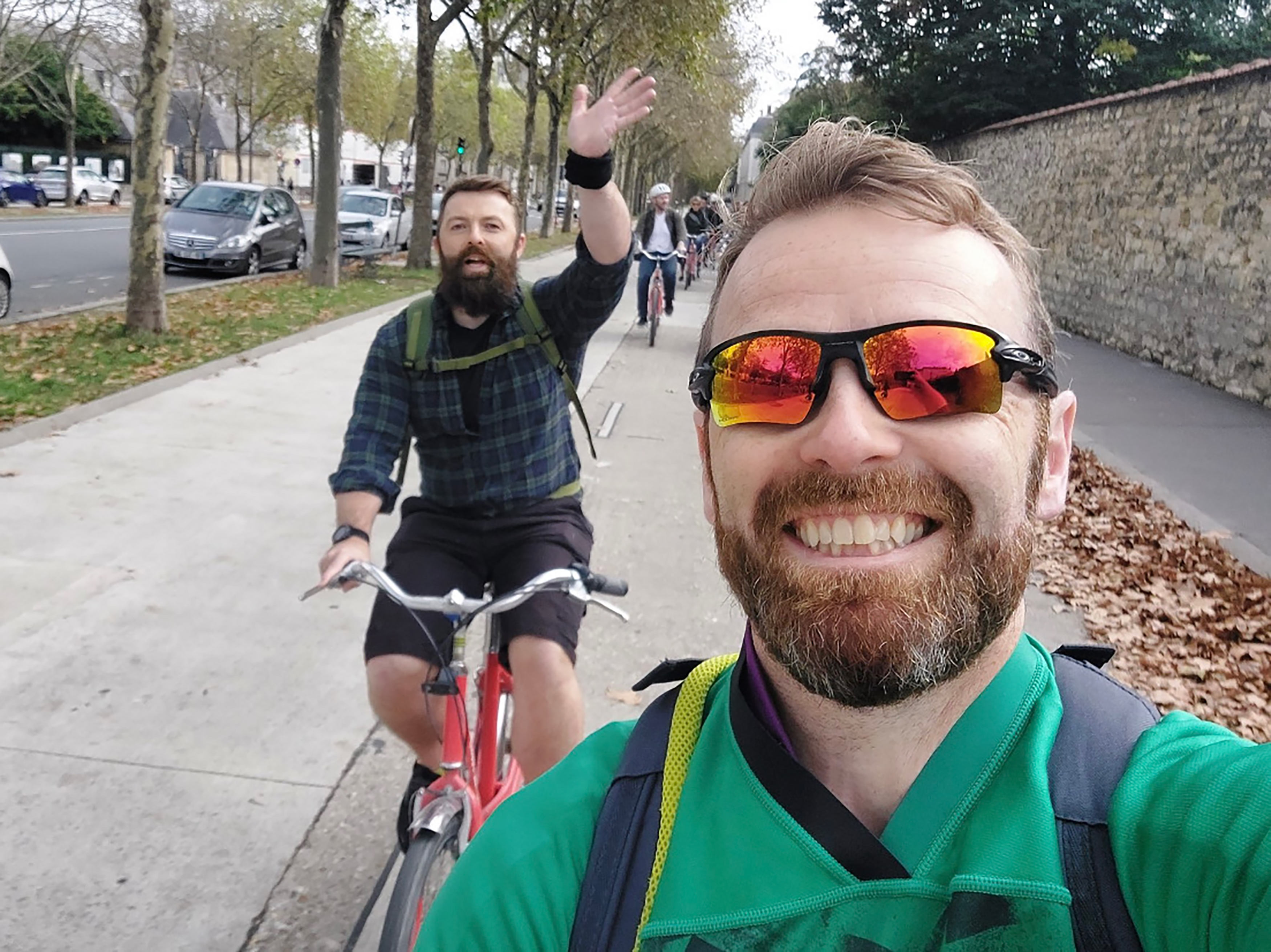
Cycle Stories A Limerick Man in Paris
The four of us joined around a dozen others, of various ages up to (if I may make an estimate!) around their mid-sixties and including an Irish family with young teens. My sister’s nerves weren’t soothed much when our guide described how he would indicate when we should ride in single file, double file, or when to “dominate” (that is, bunch up for safety in numbers), depending on the situation. He explained that this was because despite much of our time being spent on cycle lanes or low-traffic areas, we still occasionally had to contend with French drivers when rejoining roads or crossing junctions. Much like in Ireland, there appear to be a small number of drivers who think very little of cyclists and a large number who think of cyclists very little.
The reality, once we got going, was generally fairly relaxed. The quieter roads didn’t seem to be used for rat-running, and the larger roads and tourist areas were almost completely free of on-street parking. That fact in particular made a huge difference even to my own comfort levels, as an experienced urban cyclist. No parked cars means any potential danger is only on one side, and better visibility both to see and be seen. What a pleasure! Several sections of our trip were in parks or car-free riverside areas, and the larger roads we used all had allocated cycle space of varying quality. While relatively little of it was physically segregated, the sheer density of it made all the difference.
Every single road had a wide, painted cycle lane in both directions at the very least. In some cases these were bi-directional, but on most large roads there was one on each side. The newer, dedicated cycle routes are segregated by concrete dividers or bollards, or often separate from the road altogether, behind trees or flower beds (often reclaimed from previous parking spaces).
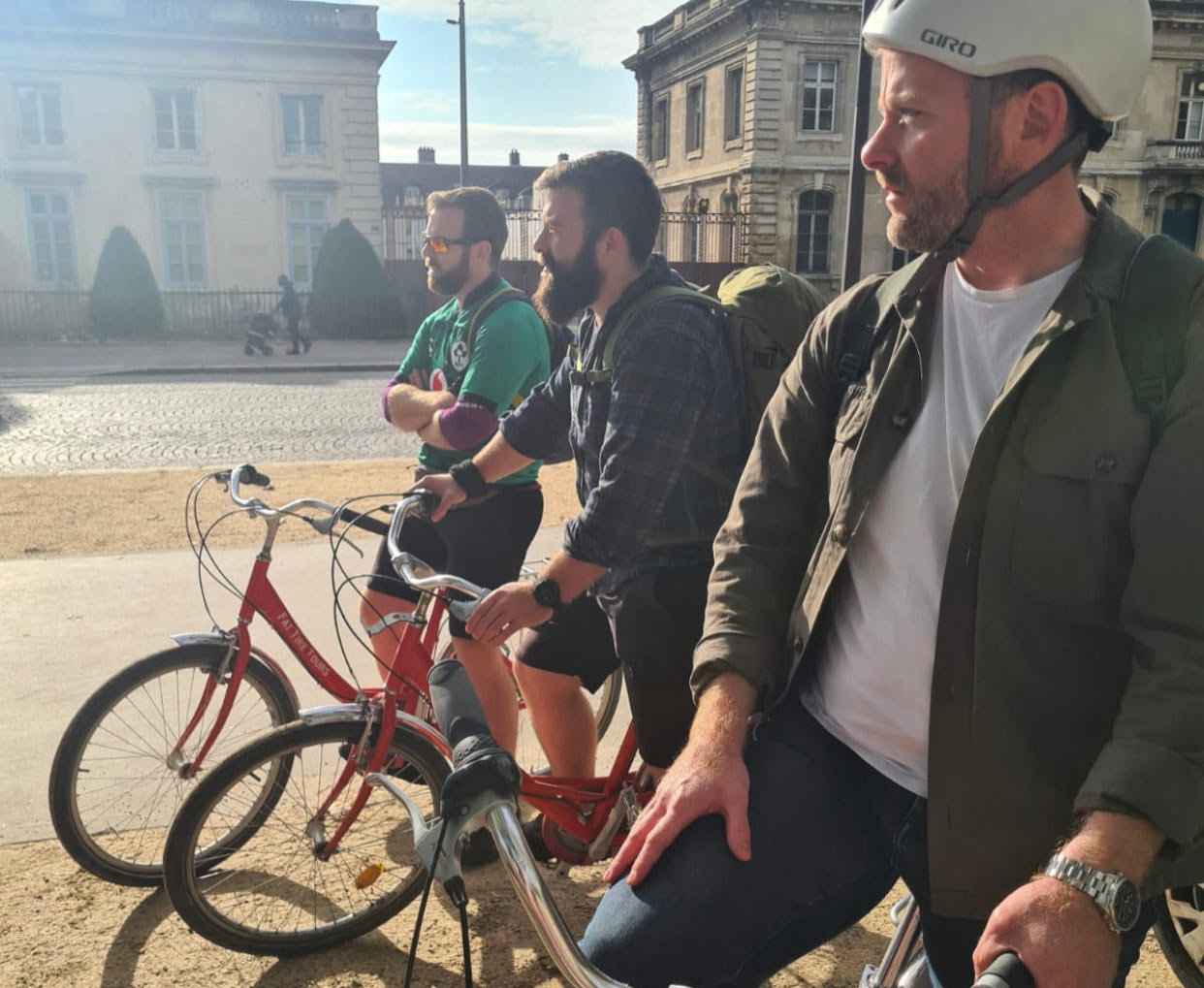
Very few were of the quality of Limerick’s flagship cycle infrastructure along O’Connell Street, and I would previously have said I wasn’t a fan of “magic paint” cycle lanes, but the fact that every turn we made offered a dedicated space for cyclists was very reassuring, even to the more nervous members our group. Some of the larger junctions appeared a bit daunting at first, often with cobbled surfaces and no road markings, but again, having a specific cycle lane to aim for on any given exit made even multi-lane city junctions relatively straightforward. The majority of traffic lights appear to have been retro-fitted with green bike lights beside the green traffic lights. A few gave a short headstart to cyclists, though most simply matched the car light sequence.
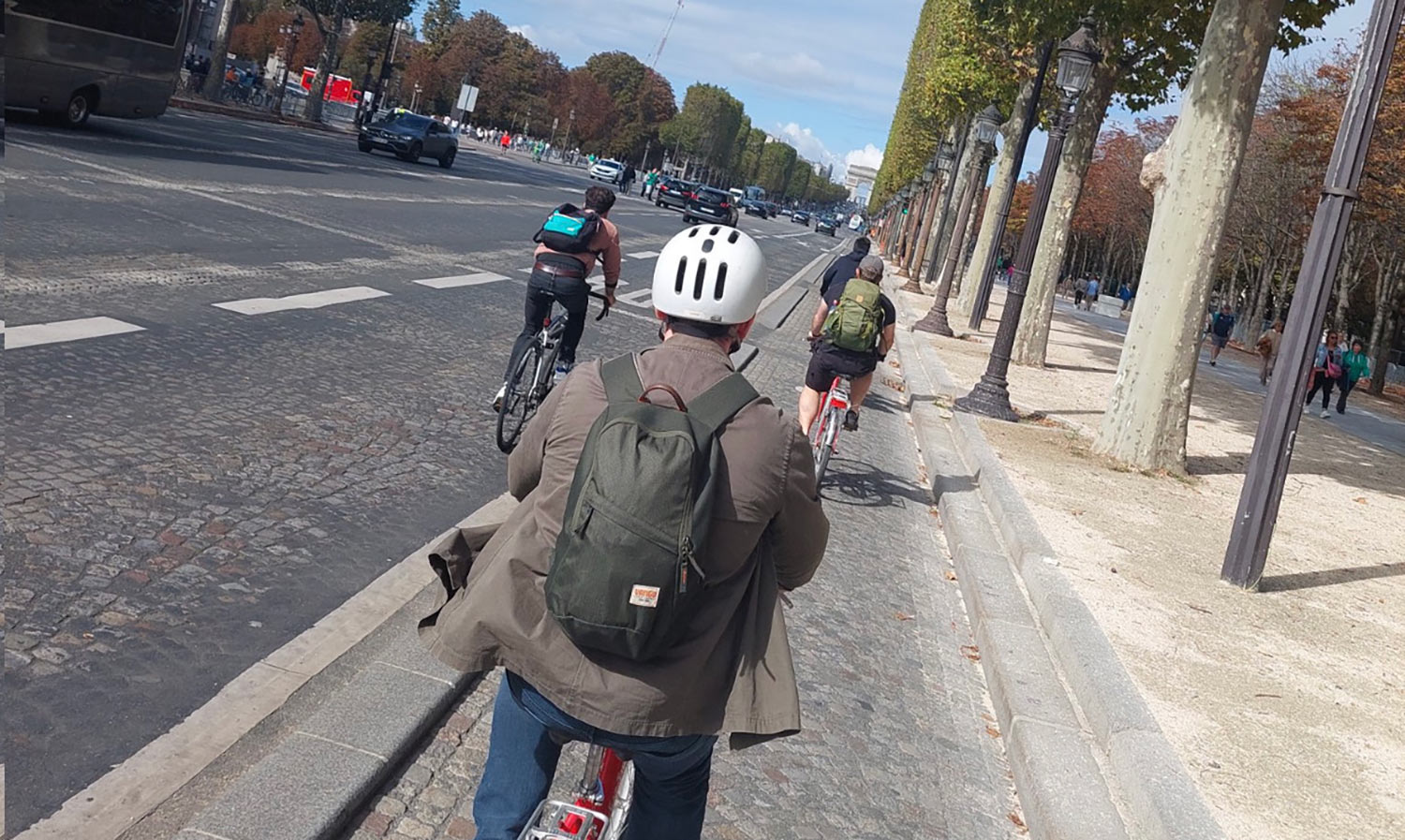
The number of Parisians cycling was encouraging too, with constant flows of very mixed-use cycling on most roads. The city’s “Velibes” shared bike scheme has been in place for years, and while still popular is starting to show its age. There are now a few competing schemes with much newer bikes, various tariffs, and a huge number of collection/drop-off points. Worth noting here that the city’s investment plan specifically focused on providing safe, secure cycle parking and storage options for private bikes as a priority with around 80% of residents who said they would like to cycle but didn’t, giving bike theft as their main reason. While bike storage racks didn’t appear to be as perennial as the cycle lanes, they were noticeably available on many streets, and always close to shops and restaurants. Personally, I have a particular grá for cargo bikes and found the number of businesses making the switch to pedal power incredibly pleasing.
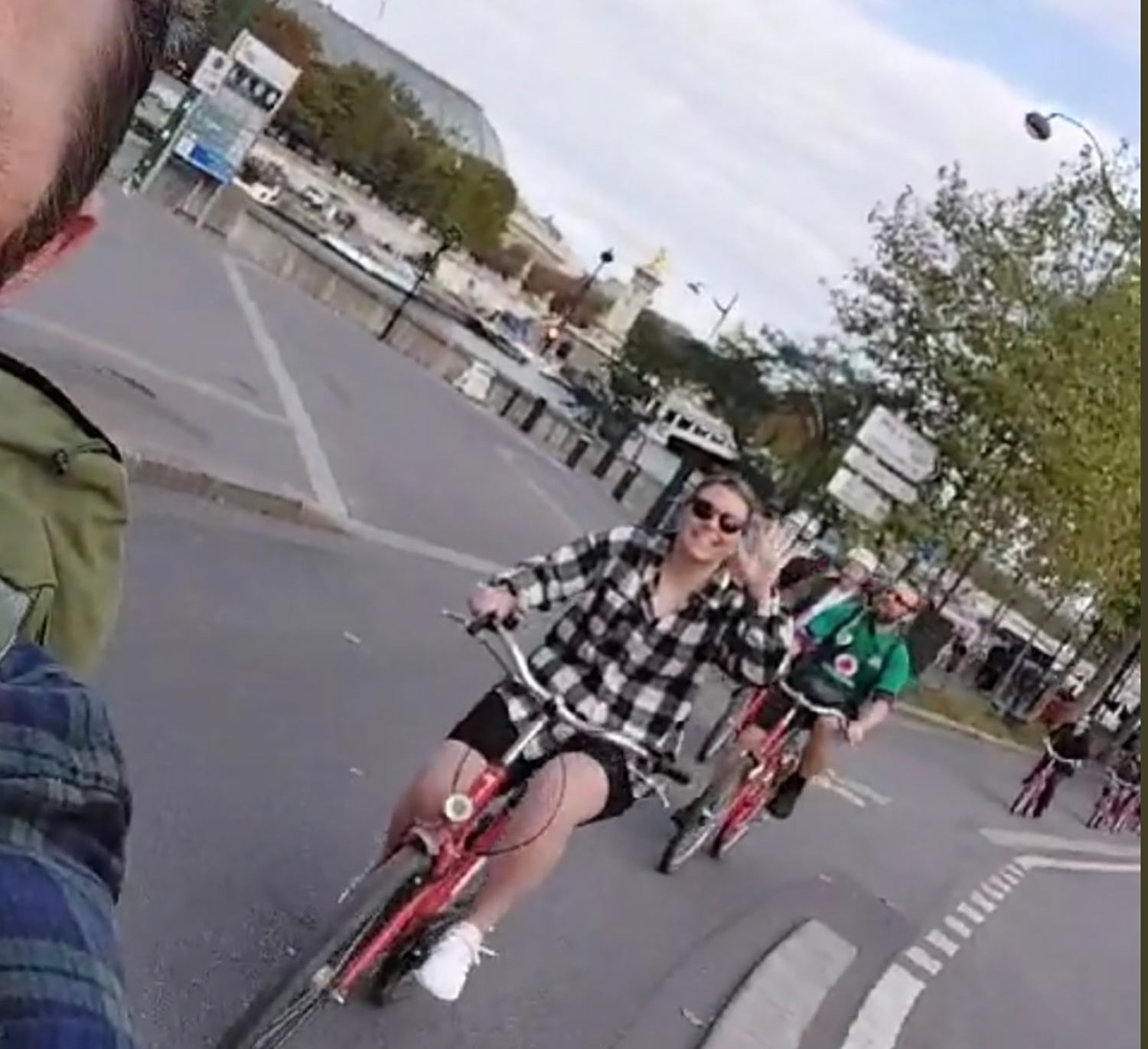
I’ll include a special mention for one plumbing company that cruised past us with a front-loading armoured storage box to rival any pickup truck! As evening fell, fleets of modified cargo trikes took their positions along the Seine, on bridges and around squares. Many were mobile crêperies, though I spotted a few cooking hot dogs and plenty selling cold snacks and drinks, as well as the obligatory cheap plastic Eiffel towers. I have never met anyone who had a cargo bike, for any reason, and wasn’t happier for it. In summary, I was very impressed with Paris’ rapid transformation from a city that was only for the bravest cyclists and Tour de France finishers, into one very much encouraging everyone to give it a go.
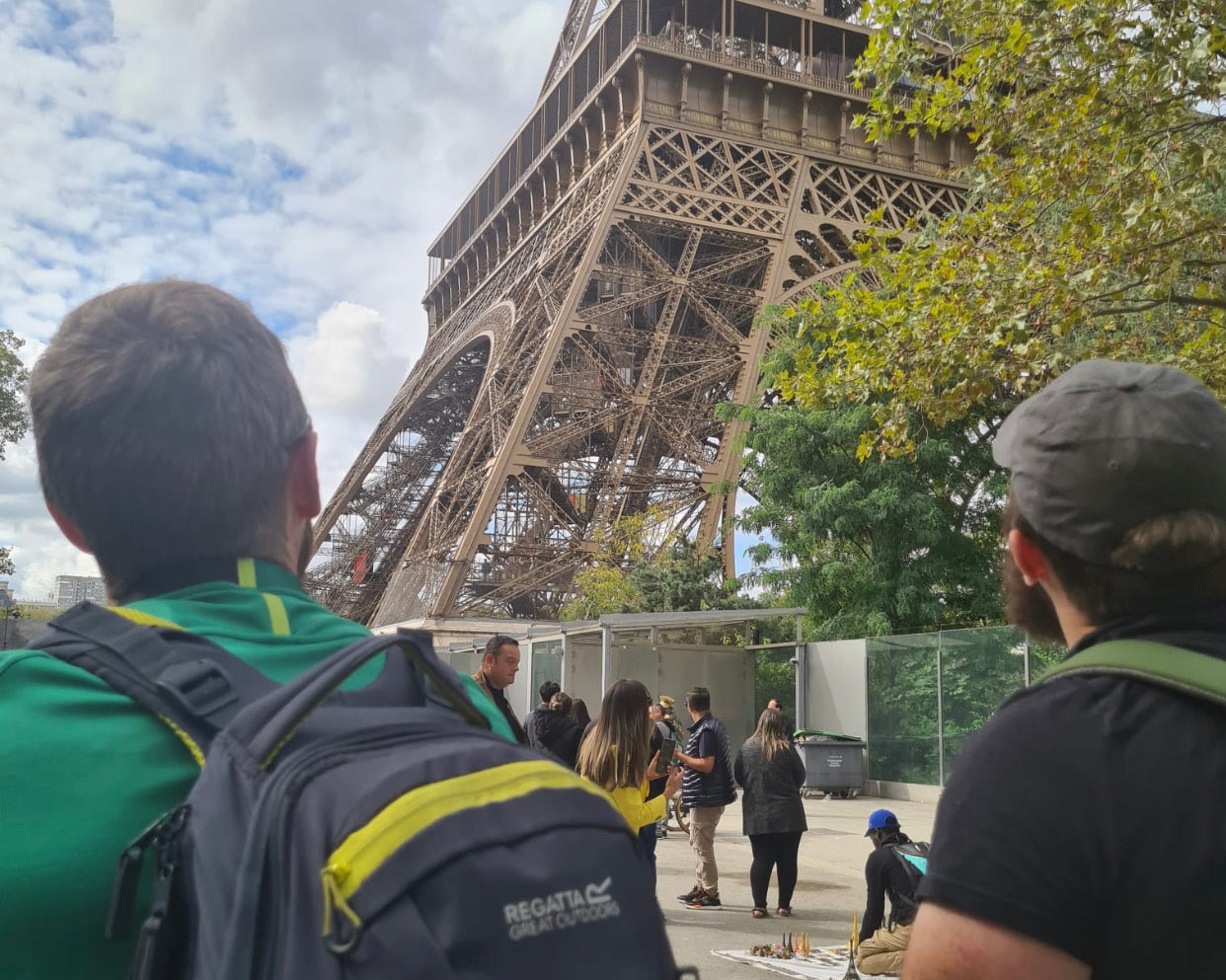
The Eiffel Tower on a cycle trip
Much of it can’t even have been that expensive, the difficult part is finding the courage to allocate the space. (To any politicians reading this, I’d refer again to Mayor Hidalgo’s landslide reelection…) After that, all you need is a bucket of white paint. The main thing I’d love to see Limerick replicate is the dense interconnectivity of the cycle network. We have a budget for active travel, and some lovely new cycle infrastructure in individual sections, but coming to a junction only to find there is no safe way to cross or merge, and no cycle lane on any of the other roads off said junction, is very discouraging. The most heartening aspect though in comparing Paris to Limerick has to be just how much can actually be achieved in a short space of time given a bit of genuine leadership. Build it and they will come!
Written by Gerry
